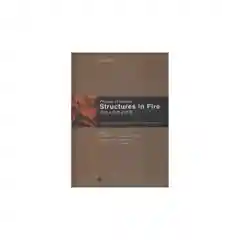-
已选 件

- 已售件
-
服务
- √7天无理由退货(拆封后不支持)
- √假一赔三
- √消费者保障服务



商品详情
-
ISBN编号
9787560854946
-
作者
李国强 等编 著
-
出版社名称
同济大学出版社
-
出版时间
2014-06-01
-
开本
16开
- 纸张
- 包装
-
是否是套装
否
-
ISBN编号
9787560854946
-
作者
李国强 等编 著
-
出版社名称
同济大学出版社
-
出版时间
2014-06-01
-
开本
16开
- 纸张
- 包装
-
是否是套装
否
- 查看全部

【内容简介】
《结构火灾安全进展:第八届结构火灾安全国际会议论文集(套装上下册》围绕在火灾下的结构安全性这一目的来讲述火灾安全。内容包括火安全工程的概念与内容、消防规范、火灾特性与火灾模拟方法、火灾对结构的影响以及对钢结构、混凝土结构以及常见组合结构在火灾下的力学行为进行评估与计算的方法。
【目录】
Scientific COmmittee
Organising COmmittee
Urganlsmg COmmlttee
Steering COmmittee
Preface
Volume I
Steel Structures
EFFECT OF FIRE EXPOSURE ON THE PLASTIC MOMENT-SHEAR DIAGRAMS FORHOT-ROLLED WIDE—FLANGED STEEL SECTl0NS
ANALYSIS OF THE RESPONSE OF A STEEL GIRDER BRIDGE TO DIFFERENT TANKER FIRESDEPENDING ON ITS STRUCTURAL BOUNDARY CONDITIONS
EXPERIMENTAL TESTS AND NUMERICAL MODELLING ON EIGHT SLENDER STEELCOLUMNS UNDER INCREASING TEMPERATURES
EXPERIMENTAL STUDY ON AXIALLY AND RO1ATlONALLY RESTRAINED HIGH STRENGTHSTEEL COLUMNS IN FIRE
TEMPERATURE DISTRIBUTl0N IN PROTECTED STEEL SECTl0N SUPPORTING A CONCRETESLAB ONTOP
A NUMERICAL INVESTIGATION OF STEEL FRAME ROBUSTNESS IN FIRE
A NEW DESIGN METHOD TO TAKE INTO ACCOUNT THE LOCAL BUCKLING OF STEELCROSS—SECTl0NS AT ELEVATED TEMPER ATURES
……
Concrete Structures
Timber Structures
VolumeⅡ
Composite Structures
Connections
Numerical Modeling
Applications of Structural Fire Safety Engineering
Materials Behavior
Authors List
【精彩书摘】
In order to allow for a better comparison of the structural behaviour between all specimens, it wasdesired to follow the same temperature increase rate in all specimens, independent of the thermalmassivity of the specimen. If the standard fire curve is applied in the furnace, different specimens withdifferent massivity will heat up at different rates. On the other hand, it is difficult to control the rate oftemperature increase in the steel specimen with a gas furnace. Such furnaces are normally designed tofollow the standard fire curve, which means that a significant amount of power is released in the furnaceas soon as the burners are turned on in order to cope with the rapid temperature increase shown by thestandard ISO834 fire curve during the first instants of the test. The electric heating system is designed tofollow a prescribed temperature heating rate directly measured on the steel specimen.
Another reason for using electric heating is that this allows a more uniform temperature distributionin the specimens. A gas furnace is indeed heated by a discrete number of burners, the location of whichcan induce a non-uniform temperature distribution in the specimen because of the radiation of the flameof each burner. In addition to that, the gas burners may not be evenly distributed around the specimen.The ceramic pads, on the contrary, are easily distributed symmetrically around the specimens.
A series of blank tests was nevertheless performed on an unloaded specimen. The first reason was toverify that the thermal insulating blankets that had been installed surrounding the specimen and theceramic pads would be sufficient to generate the desired heating rate until the desired maximumtemperature. The second reason was to verify the uniform character of the temperature distribution in thesteel specimen. In the first tests, a significant temperature difference was observed in the web of thesection between the zones that were directly covered by a ceramic heating pad and the zone that were notcovered (it is not possible to cover all the surface of the specimen with ceramic pads; some zones arecovered while some zones are not covered). With a heating rate of 100℃/hour, temperature differences inthe order of 50 to 80 degrees Celsius were observed for two locations in the web separated by only 130ram. Decreasing the heating rate or allowing for some minutes of constant temperature at, say, every100℃ step, did not prove to solve the problem. The problem was solved when a practical arrangementwas found that allowed the ceramic pads not to be in direct contact with the steel specimen. A gap ofaround 10 mm was provided between the pads and the steel section and it appeared as if convection inthis gap surrounding the coluun: reduced very significantly the temperature differences. With a heatingrate of 100℃/h up to 300℃ and 200℃/h up to 600℃, the maximum temperature difference was, at theend of the test, only 27℃. The tests of the loaded specimen were thus performed at a heating rate of200℃/h, with the heating pads separated in 6 different zones, each zone being controlled independently.
Finally, it is much easier to measure lateral displacements of the column with the electric system thanin a gas furnace. Two rods were inserted through the insulating blankets at mid-level of the column, inperpendicular directions. The horizontal displacements in two directions could thus be measured and
even the global buckling mode could be visually observed in the last instants before failure, which helped
in the decision process leading to the unloading of the specimen before excessive damage is induced inthe equipment.
……













